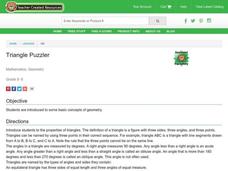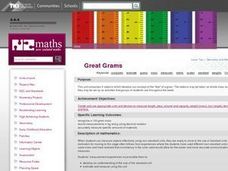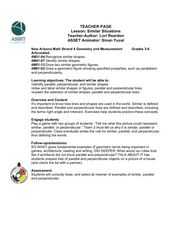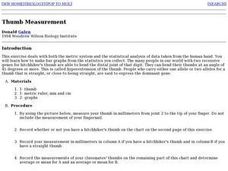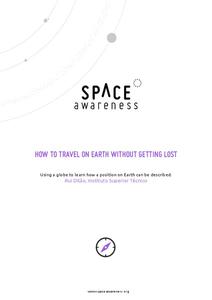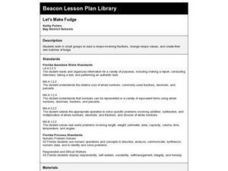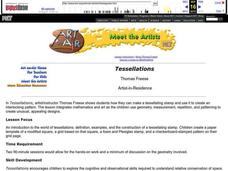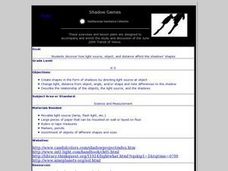Curated OER
How To Use A Protractor
Fifth graders use the SMART Board to demonstrate how to use a protractor to measure acute, obtuse, and right angles. In this protractor lesson plan, 5th graders also complete an angles worksheet.
Curated OER
Triangle Puzzler
Students are introduced to some basic concepts of geometry. They explain that the definition of a triangle is a figure with three sides, three angles, and three points. Triangles can be named by using three points in their correct sequence.
Curated OER
Bearings and Scale Drawings
In this bearings and scale drawings worksheet, students redraw diagrams to scale, measuring angles, then solve 2 additional problems, finding bearings.
Curated OER
Learning About Triangles
Upper graders label four triangles and fill in the labels correctly. They draw three original triangles and answer the questions about them.
Curated OER
Identify Triangles: Acute, Right, Obtuse, Straight
In this triangles learning exercise, students draw angles with given measurements and identify each as either acute, right, obtuse or straight. A reference web site is given for additional activities.
Curated OER
Perfection on Ice!: Math, Geometry, Fibonacci Numbers, Olympics
Students use the human body as a foundation for gaining practice in measuring angles and calculating ratios and proportions.
Curated OER
Weighing stations
Students work at a variety of stations involving practical measuring tasks. Estimation skills and the ability to measure accurately using kilograms and grams are developed.
Curated OER
Great Grams
Students measure objects effectively using standard units, They examine how consistency in the units used allows for easier and more accurate communication of mass measures.
Curated OER
Supermarket Shopping
Students participate in studying that a kilogram is a standard unit of measurement. They measure practical objects using length, mass, and capacity. They measure a number of supermarket items using units and scales.
Curated OER
Slosh, Dribble, and Plop
Students recognize the need for a standard unit of volume. They estimate and measure to the nearest liter. Also they relate the liter to the familiar everyday containers.
Curated OER
Spaced Out
The students are able to use a formula to calculate the volume of cuboids by measuring the length of each of the three dimensions. They also investigate the relationship between milliliters and cubic centimeters.
Curated OER
Artistic Angles
Fifth graders explore angles by using protractors. They recognize, describe and determine the surface area and volume of three-dimensional shapes. Students recognize the right angle, acute angle, obtuse angle and vertex. They identify...
Curated OER
Similar Situations
Students explore intersecting lines. In this intersecting lines lesson, students investigate shapes consisting of parallel, perpendicular, and similar lines. Students investigate these lines in shapes around them.
Alabama Learning Exchange
Origami Geometry
Origami is an excellent way to combine Japanese culture, art, and geometric shapes into one engaging instructional activity! Scholars begin by listening to the story Sadako and the Thousand Paper Cranes and learn the origin of...
Curated OER
Measuring Water Temperature
Students measure the temperature of three water sources. They collect data points every second for twenty five seconds for each sample using Lego Robolab temperature sensors, complete a worksheet, and analyze the data.
Curated OER
Thumb Measurement
Pupils practice measuring using the metric system and millimeters. They measure their thumbs and record their findings. Students record the findings of their classmates and find the average or mean for the two groups.
Curated OER
Math Who Am I?
In this math facts review worksheet, students read the description of each math term and try to guess what the answer is. Students may check their attempts by circling the third letter in the box which gives the answer.
Space Awareness
How To Travel On Earth Without Getting Lost
Have you ever wanted to travel the world? Take a virtual trip with a geography lesson that uses longitude and latitude, the position of the sun, an astronomy app, and a classroom globe.
Curated OER
How Tall is that Tree?
Students apply their math skills to develop an accurate estimate of the height of a tall tree. Three different methods are outlined. All grade levels should be able to perform the shadow method and the proportional method.
Curated OER
Flip's Flag
Fifth graders apply the symmetry and angle properties of polygons and use fractions to express the relationships between the areas of rectangles, squares, and triangles. They analyze various country flags and develop mathematical...
Curated OER
Phenomenological Pizza
Young scholars explore measurement in terms of pizza toppings. For this math lesson plan, students draw a circle using string and a ruler, determine areas of different size circles, find how many two topping pizzas can be made using 14...
Curated OER
Let's Make Fudge
Students make fudge after reading fractional values in recipes and finding equivalent fractions to those presented in the recipes. They study measurement abbreviations.
Curated OER
Tessellations
Students learn and review basic geometric terms, definitions, and theory, including regular polygons, lines, angles, points, etc. They make a tessellating stamp and create a repeating work of art.
Curated OER
Shadow Games
Students create different shapes by putting light on different objects. They change the distance from the object, the light source and angles to make the shadows different. They are to describe the relationship between the light, object...

